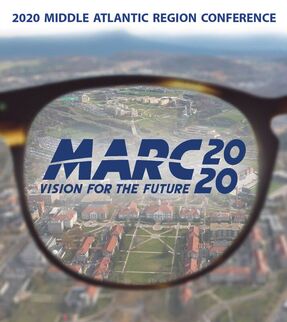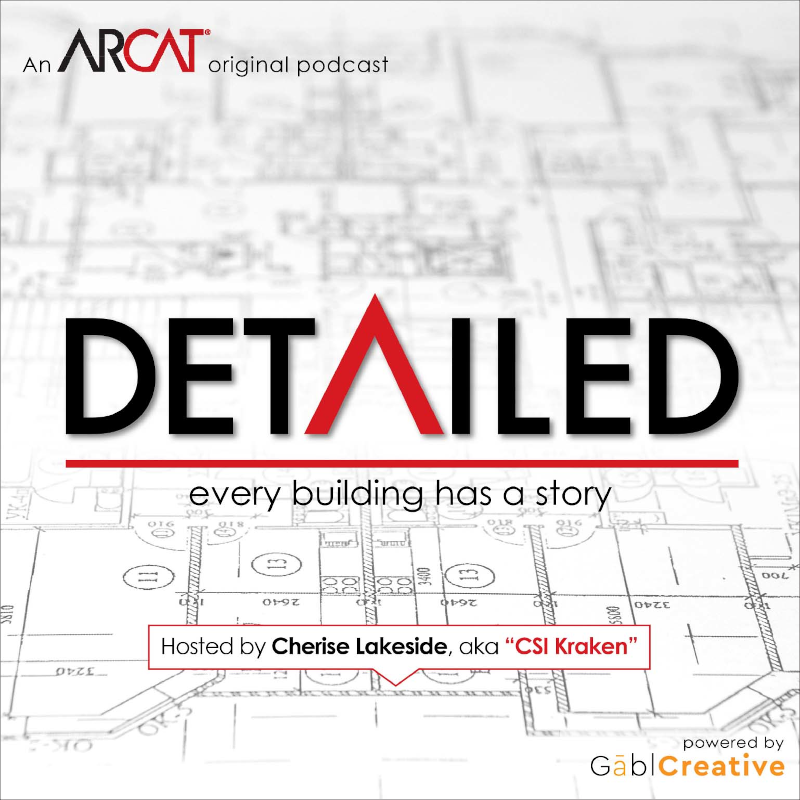|
Contributed by Eric D. Lussier
Hi.
It's Eric. Yeah, it's been a while. I know. I'm sorry. Please accept my apology? Thank you. I could use your help. As many in the AEC (Architecture/Engineering/Construction) industry face a return to some sort of office-life, normalcy or jobsites after COVID-19, I wanted to take this time to use your knowledge, experience and assistance in matters that are near and dear to my professional life, concrete and flooring finishes. Concrete moisture, surface planarity, adhesives, new products, lack of training and the skilled labor shortages are quite possibly just the tip of the iceberg when it comes to what many of us deal with on a daily basis. I would VERY MUCH appreciate it if you could take just three minutes to answer three different questions as it pertains to concrete and flooring. The best part is you can remain completely anonymous if you wish. Don't feel like answering this Google Form? Then please email me at [email protected] or send a video or text to me at 802-922-8407. I cannot thank you enough. I'm excited to read your replies.
39 Comments
Contributed by Eric D. Lussier The Construction Specifications Institute (CSI) has ten distinct regions across the United States. About seven years ago, J.W. Mollohan eloquently penned a piece that I shared on my personal blog called 'The Core Missions of a CSI Region' where his region identified the services provided to their constituent chapters and members.
I had always thought that CSI regions were held and attended for Chapter leaders and were led by former chapter leaders who felt the continued need to give back to the members. It took J.W.'s post to realize I was only half right. CSI regions provide events at a more local for anyone that wants to attend and especially those that are not able to attend the CSI annual meeting and affiliated tradeshow, CONSTRUCT. I've been fortunate to be a member within two well-respected and active regions over my eleven years with CSI. While I'm now in the Northeast Region, I started my CSI tenure as a member of the Mid-Atlantic Region when I was active in the former-Allentown CSI chapter, now Greater Lehigh Valley. The Mid-Atlantic Region comprises of 13 chapters across Pennsylvania, Maryland, Virginia and the District of Columbia. With many good friends across those Chapters, I have continued to follow their work from afar, and when Cherise and I were asked by our friend, Charles Hendricks, of The Gaines Group Architects, well over a year ago to visit Harrisonburg, VA and attend and present at MARC2020, we know we couldn't say no. Billed as "Vision for the Future", we're excited to join the ranks of 18 Learning Unit sessions from the O.G. Young Architect himself, Michael Riscica (who is presenting 'How to Pass the ARE' and 'Entrepreneurship for Architecture Students'), Phil Kabza AKA SpecGuy (presenting 'Specifications 2020: Hindsight, Foresight, and Insight'), Paul Bertram, FCSI (presenting 'Off-Site Modular Constructions Trends and Specification Pathways'), Brent Williams (presenting '– Personal Branding as a Designer in the Connected Economy' and more across 3 days in early April, including Golf, Sporting Clays, Ice Cream, our very own Let's Fix Construction workshop along with a Young Professionals Day and a CSI Night Out. If you act fast (as in today or tomorrow!), CSI members can attend for as little as $199 with discounts for Young Professional members and students. Don't find out too late in your AEC career about the benefits that a CSI region can offer. J.W. spelled it out to me seven years ago, and I wish it had been written four years before that. EDITOR'S NOTE 2/17/20: From Central VA CSI: Early bird registration is being extended to Midnight EST on Monday, February 24th. Contributed by Michael Chambers As an architectural marketer, educator, and trainer, I have tried to identify and present the most effective ways of reaching architects, establishing relationships, getting products listed in specifications, developing great educational programs, improving presentation skills, minimizing substitutions, networking, and a host of other strategies and tactics to effectively market architectural design professionals. Marketing not Sales I have long pounded home the notion that you don’t sell design professionals; you market them. The critical strategy is how to overcome the “peddler” image of the product rep and become a key resource and industry expert. Time and time again, I have made the point that architects don’t buy products; they specify them. I have offered the notion that marketing is really education; so, don’t sell, educate. While marketing is a key aspect of the effective construction product representative, it still is not the whole package. Issues on specifying and specifications are integral to success. Developing and presenting outstanding continuing education programs are incredibly effective in opening doors into design professional offices are crucial. Learning to be marketer-educator instead of a salesperson is the hallmark of a successful construction product representative. What is Missing? What then is the missing element in highly effective construction product representative? I have found myself coming full circle in the process and am convinced that in the end, the bottom line is selling. Not selling products, no, never that, but selling solutions. Design professionals operate on the basis of identifying problems and developing solutions for those problems. Products Rarely Solve Problems Products are merely elements in a solution, and it is critical to being effective with design professionals to make this key differentiation. Solutions solve problems; products are a part of a solution, but not the solution itself. Don’t misunderstand, products are critical to good solutions but are rarely the sum total of an actual solution to a problem. Solutions are made up of a series of issues, elements, constraints, and opportunities that can be simple or complex and require a range of responses to solve. A product is merely on element of a solution.
Contributed by Truwin Windows, Doors, & Siding Insulation is a vital aspect of any home. It maintains the indoor heat during winter, while allowing less cool air to escape during the summer. Heat energy leaving your house or finding its way through raises utility costs and causes discomfort all year round.
Ranging from cellulose, fiberglass to plastic spray foam, insulation ensures that your furnace or air conditioner sustains the right indoor temperature. As with any other energy efficiency topic, insulation is likewise clouded with myths and misconceptions. Listed below are the most common myths. Attic and Internal Wall Condensation Result from the Absence of Ventilation This is not entirely accurate. The right ventilation in a building may allow condensed water to escape the walls or the attics, but the lack of it is not entirely to blame for condensation. The major cause is air leakage during periods of the year where the air outside the building happens to be colder than the indoor air. The capacity of air to hold moisture together is proportional to the temperature. It means that when the air is too warm, a higher amount of moisture is held. Should warm indoor air find its way into the cavities of the wall or the attic spaces, it cools slowly and penetrates deeper into the building. Because the air is warm and moist, it leaks into the cavity of the wall and may encounter a sharp temperature gradient. With time, the air ends up losing its ability to hold the moisture leading to condensation and leaking. Condensation at this point occurs in the form of tiny droplets. The state where temperatures experience a drop leading to condensation is known as the dew point. Any amount of water in the wall cavities can lead to the development of mold. Ventilation in a building is vital, not only to deal with moisture, but also to prevent air leakage and condensation. R Values Reflect Real World Energy Performance Accurately R-value remains the most crucial metric in the evaluation of the thermal protection given by insulation. It is the only acceptable standard for measuring the effectiveness of insulation to retard heat transfer in Canada and the US. In fully metric countries, the other similar system used is RSI. Building inspectors, professional builders, and homeowners all depend on R values, given that there is no other number that can be used to measure the performance of insulation. The problem is this metric often changes depending on what is being measured. As determined in the labs, there is often a major difference between R values and the real-world energy performance delivered by different insulations. The lab analysis of R values presents significant issues considering that air movement is eliminated from the results. Any professional builder knows that air movement lowers the performance of insulation, and air currents and drafts occur within the attics and wall cavities. Any insulation product that hinders the flow of air within it gives higher insulation values than those that do allow. Contributed by Nick Carrillo (Editor's Note: October is Careers in Construction Month. Please feel free to delve into our previous posts, "Don't Just Look for Employees, Attract Them" and "Changing the Public's Perception")
We’ve done it, we’ve written enough articles to know that the construction industry is facing a workforce shortage, and that shortage isn’t going anywhere anytime soon. The problem is very clearly identified. If you ask older generations, the reason for our workforce shortage is the lack of desire to work in the trades from the younger generation(s). Or, to put it bluntly, the millennials don’t want to work hard and get dirty. I can hear it now, “millennials are the ‘everybody gets a trophy’ generation and are entitled!” Those type of casual statements are broadly painting an entire generation as lazy and entitled based on the few. Does that mean that everyone born in the 60’s is a pot-smoking hippie? Or everyone in the 70’s is a disco party maniac? No, it doesn’t. A quick Google search will show a list of the largest companies in the world run, or founded by, millennials. Facebook, The Honest Company, AirBnB, Lyft and many more companies that we all rely on and that undoubtedly take a lot of hard work to maintain. Baby boomers may not be outright saying these younger generations are worthless and hopeless when they said, ‘lazy and entitled’. However, I’ve often heard the phrase, “How do we change the mindset of an entire generation?” Hearing it enough, without back story or explanation, it leads the audience to believe that the people being referenced are wrong, and the person saying it is right. I know, after working so many years alongside baby boomers, the comments are not malicious. I know that when a frustrated owner, manager or supervisor makes these statements, they simply are trying to express the desired change in the way we communicate; a change in the way we perceive the information that one generation has to offer the other. So, how do we change the mindset of an entire generation? YOU DON’T |
AboutLet's Fix Construction is an avenue to offer creative solutions, separate myths from facts and erase misconceptions about the architecture, engineering and construction (AEC) industry. Check out Cherise's latest podcast
Get blog post notifications hereArchives
March 2022
Categories
All
|






 RSS Feed
RSS Feed
